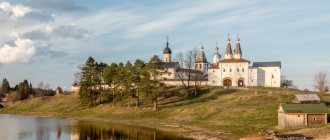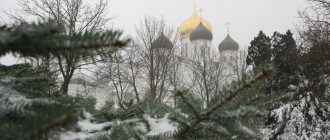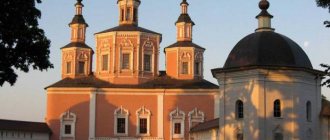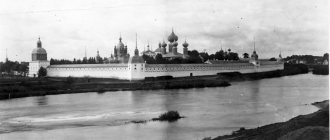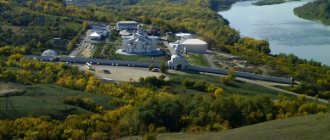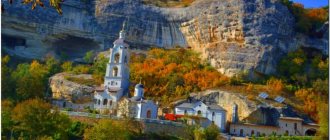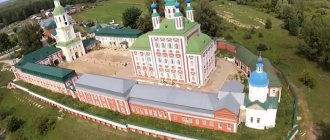Mir
Russia Voronezh region Divnogorsky village Divnogorsky Assumption Monastery Map is loading…
{"format":"leaflet","minzoom":false,"maxzoom":false,"limit":50,"offset":0,"link":"all","sort":[""], "order":[],"headers":"show","mainlabel":"","intro":"","outro":"","searchlabel":"\u2026 \u0441\u043b\u0435\ u0434\u0443\u044e\u0449\u0438\u0435 \u0440\u0435\u0437\u0443\u043b\u044c\u0442\u0430\u0442\u044b","default":"","import-annotation":false,"width ":"auto","height":"350px","centre":{"text":"","title":"""link":"""lat":50.97977499999999650981408194638788700103759765625,"lon": 39.31733100000000291629476123489439487457275390625,"icon":""},"title":"","label":"","icon":"","lines":[],"polygons":[],"circles":[ ],"rectangles":[],"copycoords":false,"static":false,"zoom":8,"defzoom":14,"layers":["OpenStreetMap"],"image layers":[] ,"overlays":[],"resizable":false,"fullscreen":true,"scrollwheelzoom":true,"cluster":false,"clustermaxzoom":9,"clusterzoomonclick":true,"clustermaxradius":80, "clusterspiderfy":true,"geojson":"","clicktarget":"","showtitle":true,"hidenamespace":false,"template":"","userparam":"","activeicon": "","pagelabel":false,"ajaxcoordproperty":"","ajaxquery":"","locations":[{"text":"\u003Cb\u003E\u003Ca href=\"/palomnik/%D0% 94%D0%B8%D0%B2%D0%BD%D0%BE%D0%B3%D0%BE%D1%80%D1%81%D0%BA%D0%B8%D0%B9_%D0%A3% D1%81%D0%BF%D0%B5%D0%BD%D1%81%D0%BA%D0%B8%D0%B9_%D0%BC%D1%83%D0%B6%D1%81%D0% BA%D0%BE%D0%B9_%D0%BC%D0%BE%D0%BD%D0%B0%D1%81%D1%82%D1%8B%D1%80%D1%8C\» title=\ "" u0439\u043c\u0443\u0436\ u0441\u043a\u043e\u0439 \u043c\u043e\u043d\u0430\u0441\u0442\u044b\u0440\u044c\»\u003E\u0414\u0438\u0432\u043d\u043e\u0433\u 043e\u0440\u0441\u043a\ u0438\u0439 \u0423\u0441\u043f\u0435\u043d\u0441\u043a\u0438\u0439 \u043c\u0443\u0436\u0441\u043a\u043e\u0439 \u043c\u043e\u 043d\u0430\u0441\u0442\u044b\ u0440\u044c\u003C/a\u003E\u003C/b\u003E\u003Chr /\u003E\u003Ca href=\»/palomnik/%D0%A1%D0%B2%D0%BE%D0%B9%D1%81% D1%82%D0%B2%D0%BE:%D0%90%D0%BD%D0%BD%D0%BE%D1%82%D0%B0%D1%86%D0%B8%D1%8F\" title=\»\u0421\u0432\u043e\u0439\u0441\u0442\u0432\u043e:\u0410\u043d\u043d\u043e\u0442\u0430\u0446\u0438\u044f\»\u003E\u0410\u0 43d\u043d\ u043e\u0442\u0430\u0446\u0438\u044f\u003C/a\u003E: »'\u0421\u0432\u044f\u0442\u043e-\u0423\u0441\u043f\u0435\u043d\u0441\u04 3a\u0438\u0439\ u0414\u0438\u0432\u043d\u043e\u0433\u043e\u0440\u0441\u043a\u0438\u0439 \u043c\u0443\u0436\u0441\u043a\u043e\u0439 \u043c\u0 43e\u043d\u0430\u0441\u0442\ u044b\u0440\u044c»' \u0412\u043e\u0440\u043e\u043d\u0435\u0436\u0441\u043a\u043e\u0439 \u0435\u043f\u0430\u0440\u0445\u0438\ u0438\u0440\u0430\u0441\ u043f\u043e\u043b\u043e\u0436\u0435\u043d \u0432 \u041b\u0438\u0441\u043a\u0438\u043d\u0441\u043a\u043e\u043c \u0440-\u043d\ u0435\u0412\u043e\u0440\u043e \u043d\u0435\u0436\u0441\u043a\u043e\u0439 \u043e\u0431\u043b., \u0432 26 \u043a\u043c \u043a \u0441\u0435\u0432\u0435\u044 0\u043e-\u0432\u043e\u0441 \u0442\u043e\u043a\u0443 \u043e\u0442 \u0433. \u041e\u0441\u0442\u0440\u043e\u0433\u043e\u0436\u0441\u043a\u0430,\u043d\u0430 \u043f\u0440\u0430\u0432\u043e\u043c \u043 1\u0435\u0440\u0435\u0433\ u0443\u0440. \u0414\u043e\u043d \u0432\u044b\u0448\u0435 \u0432\u043f\u0430\u0434\u0435\u043d\u0438\u044f \u0432 \u043d\u0435\u0433\u043 e\u0440. \u0422\u0438\u0445\u0430\u044f \u0421\u043e\u0441\u043d\u0430.","title":"\u0414\u0438\u0432\u043d\u043e\u0433\u043e\u0440\u0441\ u043a\u0438 \u0439 \u0423\u0441\u043f\u0435\u043d\u0441\u043a\u0438\u0439 \u043c\u0443\u0436\u0441\u043a\u043e\u0439 \u043c\u043e\u043d \u0430\u0441\u0442\u044b\u0440 \u044c","link":"","lat":50.97977499999999650981408194638788700103759765625,"lon":39.31733100000000291629476123489439487457275390625, "icon":""}],"imageLayers":[]}
50.979824; 39.317463
Russia, Voronezh region, Liskinsky district, Divnogorsky Monastery village
Divnogorsky Monastery village, Voronezh region
Russia
Phone fax:
+7(47391) 5-91-83
Email:
;
Holy Dormition Divnogorsk Monastery
Holy Dormition Divnogorsk Monastery
The Voronezh diocese is located in the Liskinsky district of the Voronezh region, 26 km northeast of the city of Ostrogozhsk, on the right bank of the river. Don above the confluence of the river. Quiet Pine. In common parlance, the chalk remains in the area of the Divnogorsky monastery and the cave monastery itself were called Divye or Divy. Founded in 1653 by Abbot Gury and his brethren, according to the charters of granting the monastery grain crops dated September 20, 1657 and the transfer of hay cuttings to the river. Quiet Pine from 1700 and 1701. But local legend, which existed since the end of the 17th century, attributed the construction of the cave monastery to an earlier period. At the beginning of the 20th century. historian P.V. Nikolsky wrote that “among the ascetics and simpletons of monks and laity, the conviction has become stronger that the Divnogorsk caves owe their origin to the Sicilian immigrants” schemamonks Xenophon and Joasaph, “who fled from persecution of the pagans.” According to legend, the schema-monks labored in Kyiv with the Monks Anthony and Theodosius of Kiev-Pechersk. The possibility of the existence of an ancient monastery on the site of the Divnogorsk monastery is confirmed only by indirect data: mentions in the correspondence of the Moscow Metropolitans Theognost and Alexy (XIV century) of certain abbots of Chervleny Yar, on the lands of which the Divnogorsk monastery was subsequently located.
History[edit]
Pre-revolutionary view of the monastery
The Divnogorsk Holy Dormition Monastery is located near the village of Selyavnoye-1, Liskinsky district, Voronezh region, a kilometer from the confluence of the Tikhaya Sosna and Don rivers. The geographical name of the monastery comes from its location on a mountainous area, which in the early Middle Ages was the border between the land of the Vyatichi and the Khazar Khaganate. The border between them lay at the confluence of the Quiet Pine with the Don and passed through the territory of the ancient Mayatskaya fortress, which is located in Bolshie Diva not far from the temple carved into the rock. Even in those epic times, the area kept the secret of its unique natural chalk pillars with the historical name - Divas.
The main natural feature of the monastery is the labyrinths of caves excavated in the chalk mountain. Who was the first to build underground passages here? According to the legend included in the historical description of the monastery, it is known that its founders were schemamonks Xenophon and Joasaph, who came here from Italy with an icon of the Mother of God called the Sicilian icon. Later, Abbot Gury would write about the Assumption Church that it was “hammered into stones in a pillar near the mountain” and about the church in the name of “the great wonderworker St. Nicholas” that was “on the banks of the Don.” The cave temple in honor of the Dormition of the Mother of God gave the sacred name to the entire monastery, and according to legend, it was Xenophon and Joasaph who laid the foundation for it. Only the date of these events has not been established. According to researcher Archpriest A. Kremetsky. Archbishop and historian Dimitri (Sambikin) dates the foundation of the monastery to the 15th-16th centuries, while most researchers of the 21st century in their works strive to give a more ancient appearance to the era when caves and cave temples were created. Bearing in mind the early dating of the monastery, we can say that the monastery in its original form did not last long.
The Voronezh region was attacked by nomads: Polovtsians, Pechenegs, Tatar-Mongols, who devastated it completely - Deacon Ignatius Smolyanin, a companion of Moscow Metropolitan Pimen, who was passing through these regions in 1389, tells about this in the Nikon Chronicle.
The fate of the monastery is closely connected with the restoration of the borders of Russia and the increase in its power, with the construction of such cities as Voronezh, Ostrogozhsk, Korotoyak.
The first monks of the monastery were Ukrainian monks who came to these places along with the Cossacks. The first abbot of the monastery was the learned monk Gury, the same one who left us a historical description of the monastery, and even wrote a reporting letter to Tsar Alexei Mikhailovich, where he told the monarch that the monks had built two churches, cells, and fences. These events date back to 1653, which is the formal historical date of birth of the monastery.
By the end of the 17th century, the Divnogorsk monastery became the spiritual center of the Black Earth region and had significant property and land holdings. The monastery also had to endure military action: during the peasant war of 1670-1671, cannons were even installed in the monastery for self-defense, since a decisive battle took place near the walls of the monastery between the forces of Frol Razin and government troops.
In 1699, the monastery was removed from the staff of the Belgorod Metropolitanate and became part of the Voronezh diocese.
The first Bishop of Voronezh, Saint Mitrofan, ordered that a receipt and expenditure book be kept in the monastery. The saint, apparently, treated the abbot of the Divnogorsk monastery with respect, for, despite his extreme diligence, he presented Archimandrite Ambrose with a crystal glass. No other information has been preserved about the relationship of the Voronezh saint to the inhabitants of Divnogorye.
In 1699, according to Admiral Kruys, the monastery was visited by Tsar Peter I the Great.
The life of the monastery until the middle of the 18th century can be considered prosperous. Although the monastery lost some of its property in 1714, the construction of two brick churches was carried out in the monastery, a courtyard was built in Ostrogozhsk, and a theological seminary was founded, which operated from 1742 to 1745.
In 1764, by decree of Catherine II, the Divnogorsk Monastery was deprived of all its possessions and was subject to abolition, but then it was still preserved as a provincial monastery.
The famous German traveler, geographer, geologist and biologist Samuel Georg Gmelin (nephew of the famous academician Johann Georg Gmelin), who visited the monastery in 1769, found only one abbot there. In 1773, at the request of St. Tikhon of Zadonsk, who then headed the Voronezh diocese, all lands and property were returned to the monastery, and life in the monastery was revived again.
But according to the decree of 1786, the monastery was nevertheless abolished, and the monks in 1788 were transferred to the Korotoyak Ascension Monastery.
Since 1813, local residents and clergy began to petition the supreme authorities for the restoration of the Divnogorsk monastery. In 1828, a decree was issued on the opening of the monastery, according to which the Korotoyaksky monastery became a metochion of Divnogorsky.
The period from 1828 to 1860 was distinguished by the fact that the abbots of the monastery often changed, there were disagreements between the brethren, and they lived poorly. In 1860, when the monk Anfim became abbot, the quarrels and disorder stopped. Monk Anfim led the monastery for 20 years.
In 1831, the greatest event in the history of the monastery took place - in the Bolshie Divy tract, the miraculous Sicilian icon of the Mother of God was found on a chalk pillar. The image became a particularly revered shrine of the Divnogorsk Monastery, and local residents called this icon the Iscelian icon, because those praying before the image of the Most Holy Theotokos were healed of illnesses.
Concluding a brief overview of the history of the monastery, we note that in 1903 a solemn celebration of the 250th anniversary of the monastery took place. By this time, historians, local historians, ethnographers, archaeologists, and geographers became especially interested in the past of the monastery. The traveler E. Markov, who visited the monastery at that time, left interesting travel notes entitled “In the Land of the White Mountains.” This interest still exists today, and it is possible that over time we will learn hitherto unknown things about the history of the monastery.
The life of the monastery was interrupted by the revolution and civil war. In 1924, the monastery was closed, and in its place a rest house appeared, and later a sanatorium. During the Great Patriotic War, Soviet evacuation hospitals were located here. In the post-war period, the monastery buildings were again used as a sanatorium. In 1997, the monastery buildings were again transferred to the Russian Orthodox Church. On December 25 of the same year, by decision of the Holy Synod of the Russian Orthodox Church, monastic life was resumed in the monastery. Currently there is a monastery here, the former historical and spiritual appearance of the monastery is being recreated.
Current state[edit]
In 1997, the land and buildings of the monastery were officially transferred to the Russian Orthodox Church. Soon divine services began, and then large restoration work began; the monastery's economy was equipped under the leadership of Archimandrite Parthenius (Shalatonov). In 2009-2015 The abbot of the monastery was Abbot Maxim (Lapygin), who gathered a small brethren and established a daily cycle of worship.
Currently, the abbot of the monastery is Hieromonk Alexy (Sukachev), who continues to develop and support good traditions and monastic rules. Currently, divine services are held daily, restoration work is underway, subsidiary farming is being developed, namely: cattle breeding, poultry farming, agriculture (vegetable garden, vineyards), apiary, there is a mini-bakery, prosphora bakery. A pilgrimage service operates to help pilgrims.
History of the museum-reserve
Photo - Alexander Ivanov (www.flickr.com)
Human activity has caused great harm to the unique archaeological site. For many years, flocks of sheep grazed on the slopes of the plateau.
During several expeditions in the middle of the last century, scientists raised the question of preserving the rare natural complex and assigning the status of a protected area.
Photo - Vitaly Anikin (www.flickr.com)
In 1991, the natural architectural complex with an area of over 11 thousand square kilometers was given the status of a conservation zone, namely a museum-reserve. The museum ensemble with historical, cultural and natural monuments was declared an object of cultural heritage of Russia in 2021.
For several years now, the museum-reserve has been organizing a large-scale event “Night in Divnogorye”, holding folklore celebrations, amateur theater festivals, and master classes. Hundreds of tourists come to the events.
Miraculous Icon of the Mother of God of Divnogorsk (Sicily)[edit]
Icon of the Mother of God of Divnogorsk (Sicilian)
In 1830–1831, Russia suffered a severe cholera epidemic. Residents of the town of Korotoyak were gripped by fear. At this time, the Mother of God appeared to Ekaterina Ilarionova (Kolomenskaya) in a dream and ordered her icon to be taken from the Divnogorsk Monastery: “Pray before her, and if you don’t take it, you will all die.” In the morning, the woman came to the Korotoyak Cathedral, where there were already many people gathered to pray for deliverance from the epidemic. Kolomenskaya spoke about her dream. At the same time, people remembered repeated visions of light and rays at night in the temple of the Divnogorsk courtyard. Therefore, Kolomenskaya’s story was met with confidence. Having asked permission from the shepherds, the people, together with Kolomenskaya, went to the Divnogorsk monastery for the icon (July 1831). But the icon Kolomenskaya saw in a dream was not in the monastery. Despite this, Kolomenskaya continued to ask to find the icon and give it to her. The abbot, Hieromonk Athanasius, having called everyone in the monastery, began asking questions about the requested icon. The monastic worker Andrei, a man of righteous life, who was still from Korotoyak (when the monastery was there) and often visited Divnogorye with its caves, said that he saw an ancient icon on a pillar in Bolshie Diva. Kolomenskaya went to Divy and from afar, seeing the icon, admitted that it was precisely this image that she had seen in a dream. But it was impossible to remove the icon without a ladder, since it was embedded high in the pillar. One of those who came began to crawl up the next steep slope, to which the pillar adjoins, and easily removed the icon. The dreamer, and after her all those who came, seeing the icon as if miraculously descended from the mountain, headed, carrying the miraculous image, first to the monastery, and then to Korotoyak to the monastery courtyard. The placement of the icon in the temple was accompanied by a prayer service with an akathist to the Most Holy Theotokos, and then an all-night vigil. The next day, after the liturgy and prayer service with the blessing of water, a religious procession with the icon of the Mother of God of Sicily began from the city square. After this, the disease began to recede. Meanwhile, the townspeople rushed to take the icon into their homes to pray to the Mother of God in front of it. Soon the disease completely stopped. After this, the residents of Korotoyak decided to take this icon to themselves every year - in those days when the first miracle of healing and deliverance of the city of Korotoyak from the epidemic was discovered. In 1847-1848 Russia was once again struck by a cholera epidemic. Korotoyak was not injured. But neighboring Ostrogozhsk was engulfed in this disaster. Residents of the city resorted to the intercession of the Mother of God and asked the Sicilian icon of the Intercessor from the Divnogorsk builder, Hieromonk Mercury. On August 29, 1847, they brought it into their city for the first time. And again the disease began to weaken. Grateful townspeople in 1848 asked Voronezh Archbishop Ignatius to allow them to bring the icon to the city every year for prayer services from August 29. Bishop Ignatius allowed the icon to be received in Ostrogozhsk only for three days (from June 28 to July 1). But the residents of Ostrogozhsk again asked to satisfy their previous petition, “considering this possible especially since citizens of the neighboring city of Korotoyak have long enjoyed the right to take her annually to their city from July 1 to August 14, and the Divnogorsk Monastery, being in the dachas of the Ostrogozh district, in the concept of community life constitutes our common affiliation” (P. Nikolsky “Divnogorsk Assumption Monastery. Historical sketch.” Voronezh, 1904). This time they asked that the miraculous Sicilian Icon of the Mother of God remain in Ostrogozhsk from August 29 to October 25, so that every resident of the city could, according to his zeal, pray before the icon in his own home, and even county residents could pray here, which Many people could not do it remotely from the monastery. One of the consequences of this order of affairs would be an increase in funds for the renewal of the Divnogorsk monastery. After this petition, Archbishop Ignatius considered it necessary to make a representation to the Holy Synod. The Holy Synod, according to the opinion of His Eminence Ignatius, on September 2, 1850, determined to allow the citizens of Ostrogozhsk to bring the Sicilian Icon of the Mother of God to their city for a period of two months - from August 29 to October 29, which was followed by the Highest permission of the Sovereign Emperor Nikolai Pavlovich. Since then, surrounding residents flock to Ostrogozhsk every year on August 29th. On this day, many pilgrims gather in the monastery not only from surrounding villages, but also from remote areas. On the morning of this day, after the liturgy, the miraculous icon is carried away from the Divnogorsk Monastery, accompanied by several hieromonks and priests in vestments, deacons with censers, with church singing, preceded by a lantern with a candle. The icon is accompanied by pious pilgrims, mostly coming from the monastery, some arriving on the way (more than 20 miles) from Korotoyak and nearby villages. When the icon approaches Ostrogozhsk, the city clergy comes out to meet it, several miles from the city, and the icon is solemnly brought into the city cathedral, where a prayer service is held, and then at the all-night vigil the akathist to the Most Holy Theotokos is read. The next day and on all subsequent days, the townspeople take the holy image into their homes. Only at night is it brought to church
From the book by P. Nikolsky “Divnogorsk Assumption Monastery. Historical sketch.” Voronezh, 1904
How to get there[edit]
Address:
397965 Russia, Voronezh region, Liskinsky district, village. Selyavnoe-1.
Due to the fact that the Divnogorsky Monastery is located next to the railway, getting to it is not difficult. From the Voronezh-1 station, it is enough to take the train to the Liski station, and then the Liski - Ostrogozhsk (or Liski - Alekseevka) train will take you to the Divnogorye platform.
Directions by car:
You need to drive along the M-4 Don highway until you turn to the town of Liski (if you are driving to the South, the turn will be to the right). Further, before reaching Liski, follow the sign for the city of Ostrogozhsk to the railway crossing in the village of Puhovo, which you do not need to cross, but go straight two kilometers to the village of Kovalevo, where you need to cross the railway crossing. Further straight along the main road to the village of Selyavnoye-1. In the village of Selyavnoe-1, follow the “monastery” sign and drive to the monastery parking lot. The parking lot is several hundred meters away from the monastery due to the steep descent along the chalk mountain. The descent is carried out independently. Please take care of comfortable shoes.
Tel/fax:
+7(47391) 5-91-83
Pilgrimage service:
+7 (920) 436-32-57
Email:
;
Where to stay
Photo from the website - kluch.media
The museum-reserve is open to visitors all year round. Tourists can visit the complex freely or as part of a guided tour group. Before planning a visit to Divnogorye, visit the official website of the museum-reserve https://www.divnogor.ru/.
Near the natural ensemble there is a camping site for autotourists and a hotel. For those who like a comfortable stay, there are several hotels in Liski; small guest houses are available for rent in the nearby village of Divnogorye.
Photo from the site - static02.rusroads.com
The Divnogorye plateau with its pristine nature, ancient history and epoch-making monuments is a place of new discoveries that contributes to the knowledge of our world.
The Strana TV channel will tell you a little more about Divnogorye:
Pilgrim[edit]
Schedule of services:
6:00 - Brotherly prayer service, Midnight Office.
7:15 — Divine Liturgy.
16:00 — Evening service.
Excursions
The excursion service of the monastery introduces guests and pilgrims to the spiritual and historical heritage of the monastery, its temples, including the cave temple, unique natural landscapes, chalk mountains with miraculous Divas. You will be able to pray at the main shrine of the monastery - the miraculous icon of the Mother of God of Sicily or Divnogorsk, and learn about the life of the monks of the monastery. The tours are conducted by experienced guides and residents of the monastery.
You have the opportunity to use the electronic APPLICATION FOR VISITING THE MONASTERY
, order a planned pilgrimage to the holy monastery, indicating information about yourself, desired excursions, meals, and overnight accommodation.
Cave Church of the Nativity of John the Baptist in Malye Divy, 17th century
In the Holy Dormition Divnogorsk Monastery, on the upper slope of the mountain, in a chalk column, there is a cave church of St. John the Baptist. It is carved at an altitude of more than 85 meters above the level of the Don River. The altar is elevated above the church by several steps cut into the chalk mountain; the throne, the high place and the choirs are carved from stone. The beginning of this church, they think, was laid by the local first hermits Xenophon and Joasaph; its expansion was the work of subsequent ascetics. On the right side, from the entrance to the church, a cave is carved inside the mountain to the northeast, 49 meters long and one and a half arshins wide; it began with Xenophon and Joasaph, who lived here and were buried at the entrance to the cave. After which it was continued by others. It was finished at a later time.
